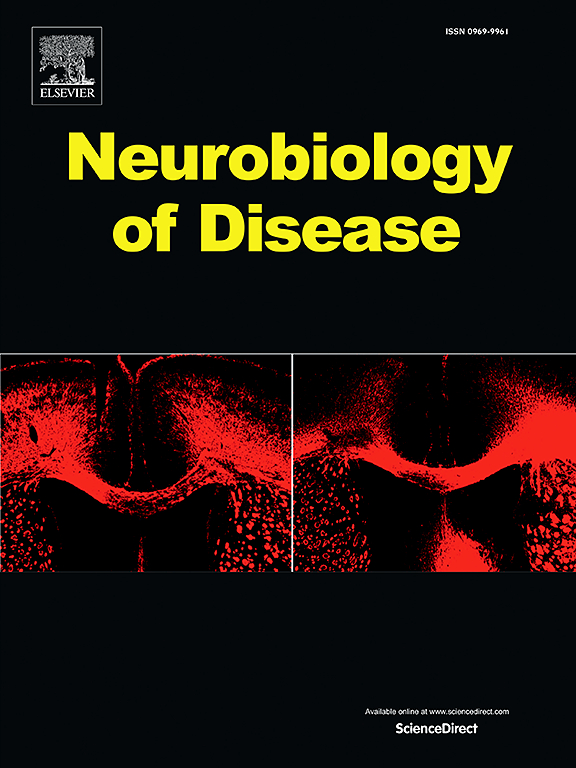Calcium-iron crosstalk in epileptogenesis: Unraveling mechanisms and therapeutic opportunities
IF 5.1
2区 医学
Q1 NEUROSCIENCES
引用次数: 0
Abstract
Epilepsy, a chronic neurological disorder affecting millions globally, remains poorly understood in its etiology and therapeutic management. Emerging evidence highlights the intricate interplay between calcium (Ca2+) and iron (Fe2+/Fe3+) ions in modulating neuronal excitability, oxidative stress, and synaptic plasticity—key processes implicated in epileptogenesis. This review synthesizes current knowledge on the dual roles of Ca2+ and Fe2+/Fe3+ in epilepsy, emphasizing their bidirectional regulatory mechanisms and pathological synergism. Calcium dysregulation, mediated through voltage-gated channels (e.g., Cav1.2, Cav3.2), store-operated calcium entry (SOCE), and mitochondrial calcium uniporters (MCU), exacerbates neuronal hyperexcitability and seizure propagation. Concurrently, iron overload drives ferroptosis via lipid peroxidation and glutathione depletion, while iron deficiency impairs neurodevelopmental processes. Crucially, Ca2+-Fe2+ crosstalk intersects at multiple nodes: TRP channels (e.g., TRPC6, TRPML1) facilitate dual ion transport; mitochondrial dysfunction links Ca2+ overload with Fe2+-dependent ROS generation; and inflammatory cascades disrupt both ion homeostasis. Clinically, antiepileptic drugs targeting Ca2+ channels (e.g., ethosuximide, zonisamide) and emerging ferroptosis inhibitors (e.g., deferoxamine, RTA 408) underscore the therapeutic potential of modulating these pathways. However, drug resistance and incomplete seizure control necessitate novel strategies leveraging ion interaction networks. We propose that combinatorial approaches targeting Ca2+-Fe2+ signaling hubs—such as MCU-TRPML1 axes or redox-sensitive RyR channels—may offer synergistic benefits. Future research must prioritize cross-model validation, advanced neuroimaging biomarkers, and multidisciplinary frameworks to translate mechanistic insights into precision therapies. This comprehensive analysis positions Ca2+-Fe2+ crosstalk as a pivotal frontier in epilepsy research, bridging molecular pathophysiology with innovative treatment paradigms.
癫痫发生中的钙-铁串扰:揭示机制和治疗机会
癫痫是一种影响全球数百万人的慢性神经系统疾病,对其病因和治疗管理仍知之甚少。新出现的证据强调钙(Ca2+)和铁(Fe2+/Fe3+)离子之间复杂的相互作用在调节神经元兴奋性、氧化应激和突触可塑性——癫痫发生的关键过程中。本文综述了Ca2+和Fe2+/Fe3+在癫痫中的双重作用,强调了它们的双向调节机制和病理协同作用。通过电压门控通道(如Cav1.2、Cav3.2)、储存操作钙进入(SOCE)和线粒体钙单转运蛋白(MCU)介导的钙失调加剧了神经元的高兴奋性和癫痫发作的传播。同时,铁超载通过脂质过氧化和谷胱甘肽耗竭驱动铁下垂,而铁缺乏损害神经发育过程。至关重要的是,Ca2+-Fe2+串扰在多个节点相交:TRP通道(如TRPC6, TRPML1)促进双离子传输;线粒体功能障碍将Ca2+超载与Fe2+依赖性ROS生成联系起来;炎症级联反应破坏了这两种离子的稳态。临床上,针对Ca2+通道的抗癫痫药物(如乙氧亚胺、唑尼沙胺)和新兴的铁下垂抑制剂(如去铁胺、RTA 408)强调了调节这些通路的治疗潜力。然而,耐药和不完全癫痫控制需要利用离子相互作用网络的新策略。我们提出针对Ca2+-Fe2+信号中心(如MCU-TRPML1轴或氧化还原敏感的RyR通道)的组合方法可能提供协同效益。未来的研究必须优先考虑跨模型验证、先进的神经成像生物标志物和多学科框架,以将机制见解转化为精确的治疗方法。这项综合分析将Ca2+-Fe2+串扰定位为癫痫研究的关键前沿,将分子病理生理学与创新治疗范式联系起来。
本文章由计算机程序翻译,如有差异,请以英文原文为准。
求助全文
约1分钟内获得全文
求助全文
来源期刊

Neurobiology of Disease
医学-神经科学
CiteScore
11.20
自引率
3.30%
发文量
270
审稿时长
76 days
期刊介绍:
Neurobiology of Disease is a major international journal at the interface between basic and clinical neuroscience. The journal provides a forum for the publication of top quality research papers on: molecular and cellular definitions of disease mechanisms, the neural systems and underpinning behavioral disorders, the genetics of inherited neurological and psychiatric diseases, nervous system aging, and findings relevant to the development of new therapies.
 求助内容:
求助内容: 应助结果提醒方式:
应助结果提醒方式:


